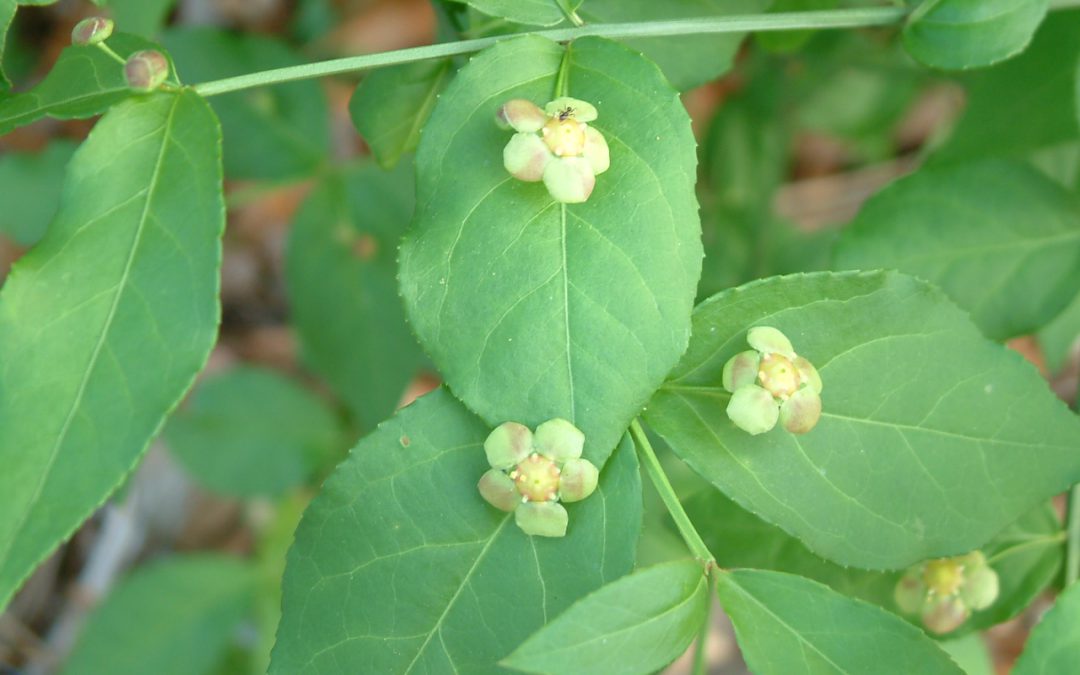
by Beth Bolles | Apr 28, 2022
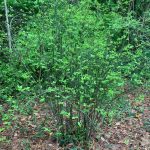
Strawberry bush with new spring growth. Photo by Beth Bolles, UF IFAS Extension Escambia County.
When I was first planting a landscape in 2001, I wanted to include some interesting native plants to provide a natural look for the back edges of the property. I was able to find a few less commonly sold natives from a small local nursery including a Bigleaf magnolia, Vaccinium, Sourwood, Cinnamon fern, and Strawberry bush.
Twenty years later, I am still enjoying these natives in my landscape and they are doing well despite my sandy, well drained, nutrient poor conditions. One of my favorites of this group is the Strawberry bush, Euonymous americana.
Strawberry bush is a deciduous shrub that grows about five feet tall. It has multiple stems with new stems forming each season. Since my yard is so dry, my clump is by no means out of bounds after 20 years of growth. Small pale green flowers grow from the nodes in spring. For most of the year, you forget about this plant until one day in the fall, you notice brilliant red fruits that split open to show orange seeds. Another common name is Hearts-a-bustin’.
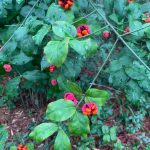
Fall color with Strawberry bush. Photo by Beth Bolles, UF IFAS Extension Escambia County.
Despite one of its common names, Strawberry bush is not grown as an edible for people but serves as a wildlife food source. Deer may enjoy leaves and twigs and many birds and small mammals will eat the seeds.
If you find a local nursery that is growing a few, consider adding Strawberry bush to a shaded spot in your landscape.
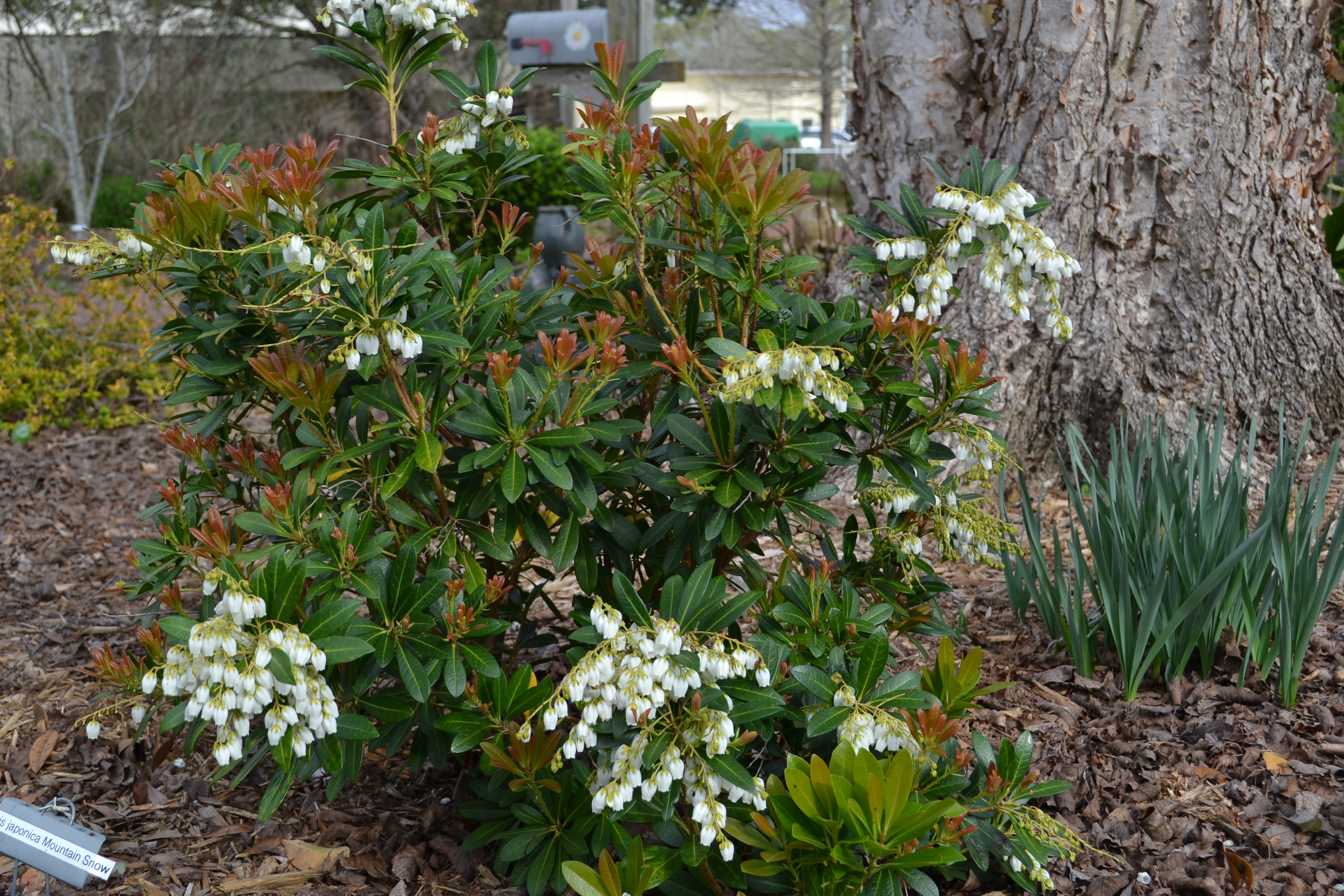
by Beth Bolles | Dec 1, 2017
There are plants that gardeners may know and love from other regions that just do not perform well in the heat, humidity, and soils of our area. One example is the Japanese pieris, an attractive evergreen shrub with showy white blooms in spring. This shrub has a few specific environmental requirements that make it unsuitable for most gardens along the Panhandle, including the need for rich organic soil that holds some moisture but is well drained.

Late winter/early spring flowers on the Mountain Snow. New foliage also emerges reddish. Photo by Beth Bolles, UF IFAS Extension Escambia County.
For those of you who thought that a garden with Japanese pieris is only a dream, the nursery industry has now made your dream a reality. Part of the Southern Living plant collection is a more heat tolerant Japanese pieris called Mountain Snow™ that is showing promise. Site selection is still very important. Mountain Snow™ will grow best with summer shade and in beds that are amended with organic material. Water must be applied when rainfall is lacking and soil must be well drained.
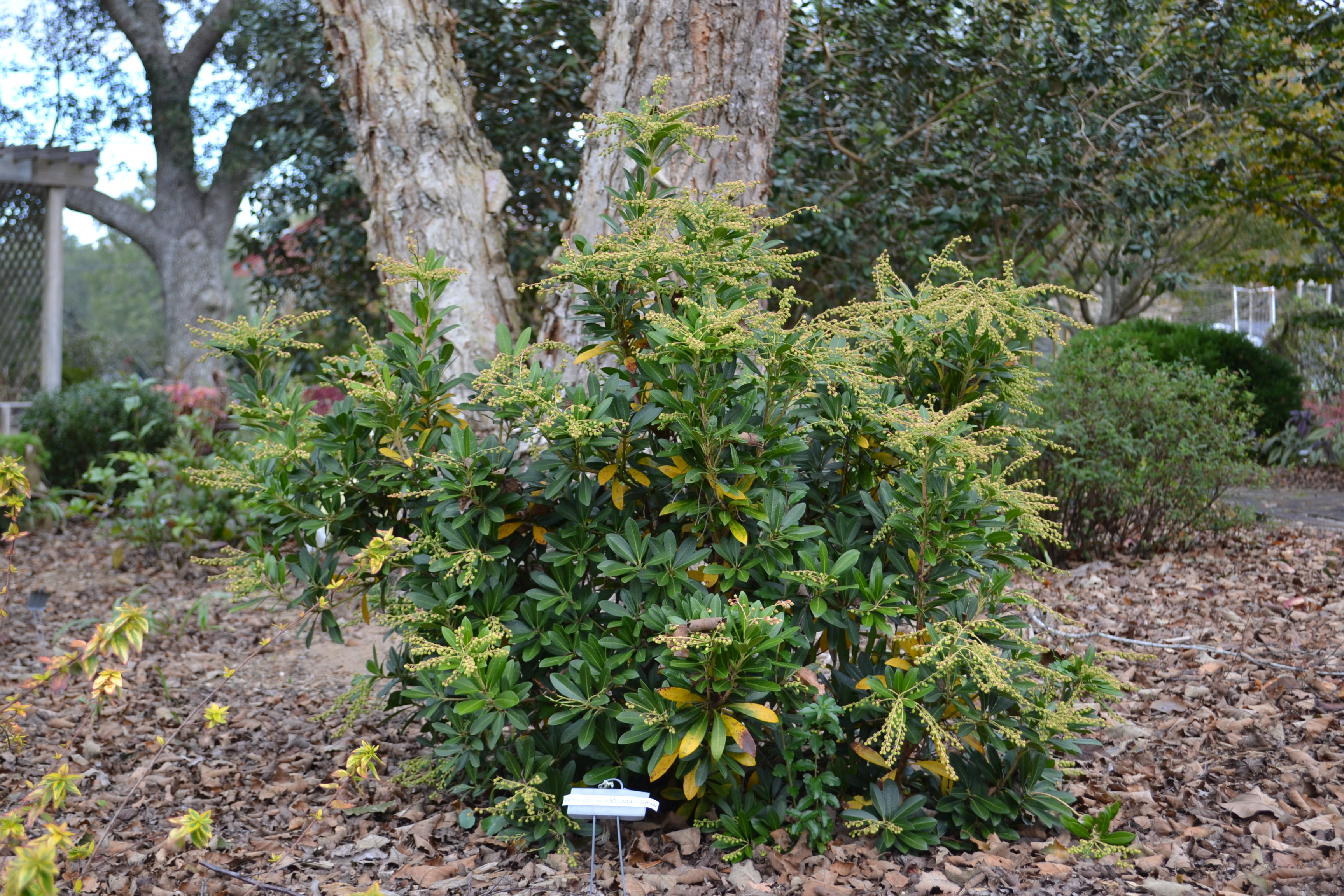
Shrubs will grow about 4 feet by 3 feet. Flower buds cover this established plant. Photo by Beth Bolles, UF IFAS Extension Escambia County.
Although those requirements can not be met in all landscapes, there are gardens like the Escambia County Demonstration Garden where a Mountain Snow™ plant will grow well. Our shrub is planted in an irrigated ornamental bed with organic mulch on top and receives summer shade from a deciduous tree. At two years old, it appears to be doing well in our area. If you have a garden spot with the conditions appropriate, consider trying this shrub for early season interest.





